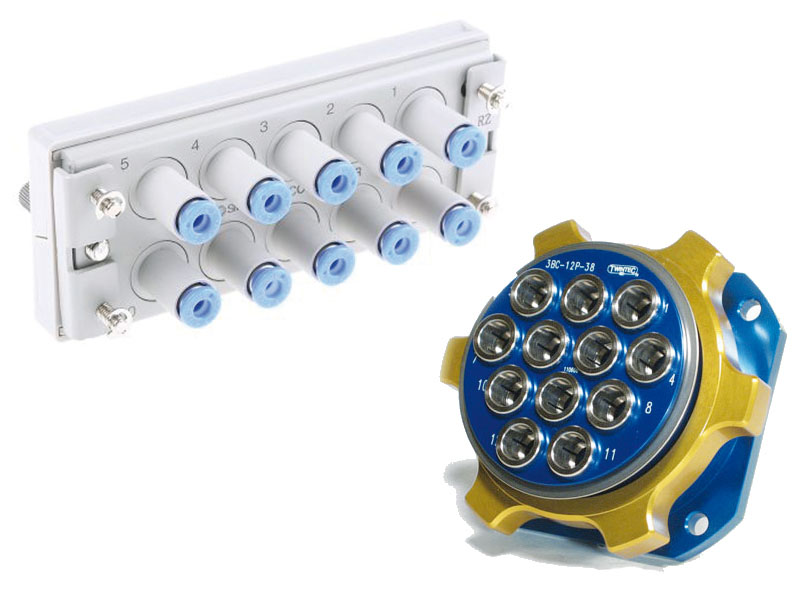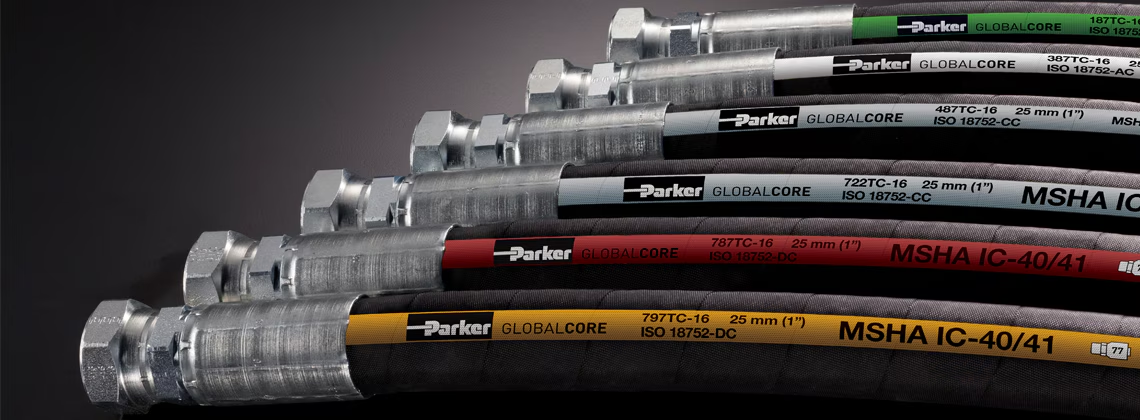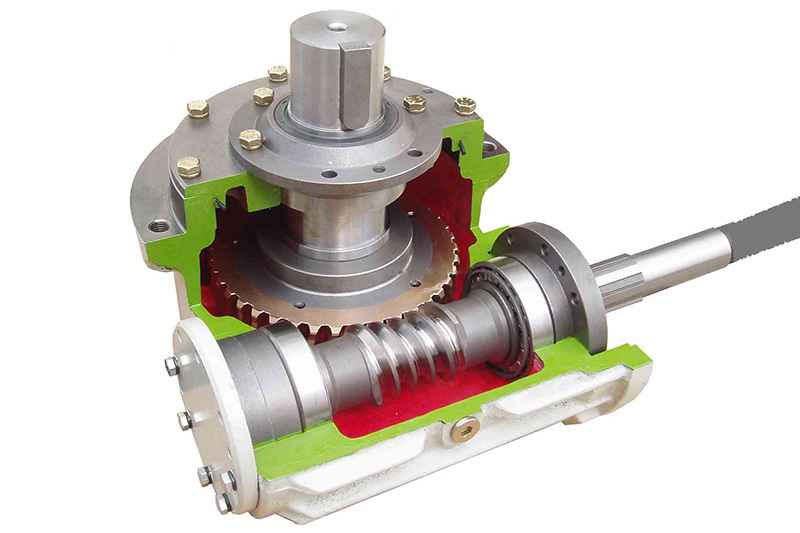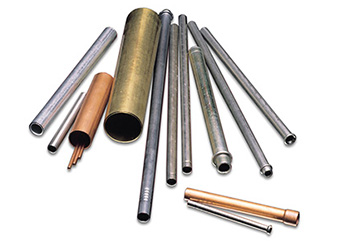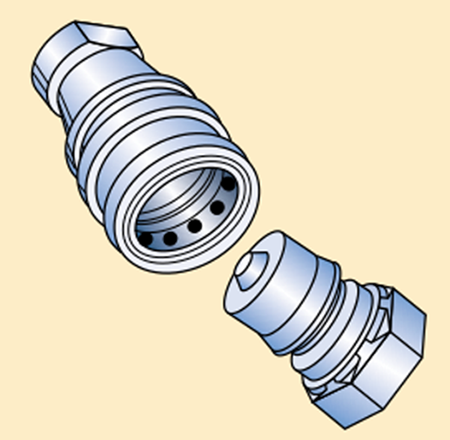不是所有的平面接头都是相同的O-ring Face Seal Fittings
Stretch your mind back to the early 1980s… the first analog cell phone was released by Motorola measuring roughly 12 inches long, personal media players were bulky, playing only cassettes or CDs, and WordStar was launched as the first word processing program. In the world of fluid and gas handling, the 80s were also a time of new development. The O-ring face seal (ORFS) fitting for industrial hydraulic applications was introduced in an effort to eliminate leakage commonly seen in hydraulic systems experiencing higher operating pressures and more severe mechanical shocks. Named for its key design feature, the ORFS fitting utilizes an O-ring that provides a more reliable seal than traditional metal-to-metal tube fitting styles.
Why go with an O-ring?
Over the nearly 40 years since its release, the ORFS fitting has built a reputation for delivering a variety of important benefits. In addition to providing a more reliable connection seal, this fitting design offers:
Zero clearance for easy plumbing
Resistance to over-torquing/eliminated damage from over-tightening
Vibration resistance/reduced loosening caused by system vibration
Flat face and elastomeric seal for unlimited reusability
However, as the title of this post implies, there are many ORFS fittings in the market. All ORFS fittings improve reliability over metal-to-metal fitting styles – no doubt – but Parker has spent decades developing exclusive enhancements to our Seal-Lok™ ORFS fittings that eliminate potential issues and extend the fitting’s capabilities.
Trap-Seal solves the common issues
Parker Trap-Seal™ technology proactively protects against issues
that some people experience when using ORFS fittings: O-ring fallout and
O-ring pinch. 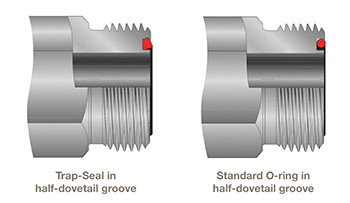
O-ring fallout: This can happen during transit, storage or assembly. When an ORFS fitting is assembled without an O-ring, the key sealing mechanism, the connection will leak. Sometimes the missing O-ring is caught, but not always. Either way, it adds to the time needed to assemble (or reassemble!) your connection.
O-ring pinch: Caused when an O-ring partially pops
out of the groove and is pinched outside of the groove during assembly,
O-ring pinch compromises the connection seal and can cause leaks.
To eliminate these potential issues, Parker developed Trap-Seal™, a trapezoidal-shaped seal that sits snugly in the ORFS fitting’s captive O-ring groove (CORG). It ensures improved retention and provides maximum assurance for leak-free connections.
The more robust, the more reliable
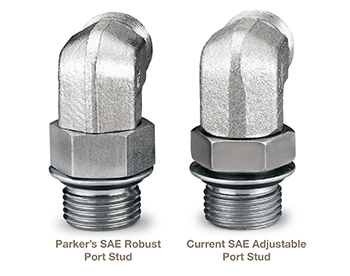 The
O-ring pinch issue can happen on adjustable SAE O-ring boss (ORB) port
ends as well. This is due to thread exposure below the locknut that
leads to a deformed backup washer, pinching the O-ring and creating an
O-ring extrusion gap with the potential to leak. To fix this, Parker
created the patented Robust Port Stud™. With a longer locknut, the
Robust Port Stud eliminates exposed threads and the leak potential of
adjustable SAE O-ring boss port ends. This enhanced port end comes
standard on all Seal-Lok fittings with an adjustable SAE O-ring boss
port end.
The
O-ring pinch issue can happen on adjustable SAE O-ring boss (ORB) port
ends as well. This is due to thread exposure below the locknut that
leads to a deformed backup washer, pinching the O-ring and creating an
O-ring extrusion gap with the potential to leak. To fix this, Parker
created the patented Robust Port Stud™. With a longer locknut, the
Robust Port Stud eliminates exposed threads and the leak potential of
adjustable SAE O-ring boss port ends. This enhanced port end comes
standard on all Seal-Lok fittings with an adjustable SAE O-ring boss
port end.
Tough applications call for tough measures
As you know, ORFS fittings were developed for high-pressure
applications. Many of these are also in harsh environments where
corrosion is a constant threat to equipment life. When sourcing ORFS
fittings, corrosion resistance should be on your radar. Parker offers ToughShield plating,
which comes standard on our steel Seal-Lok ORFS fittings, and provides
up to 1,000 hours of corrosion resistance – more than 10 times the SAE
required standard - and outlasts the competition. See the results for yourself.
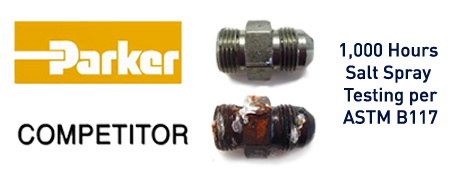
Seal-Lok ORFS tackles new markets and applications
Parker has taken the many advantages of the ORFS fitting design and engineered versions to perform in applications with unique demands where other ORFS fittings on the market cannot. Understanding these differences will go a long way in optimizing your operation. Here are a couple of new Seal-Lok variations currently available:
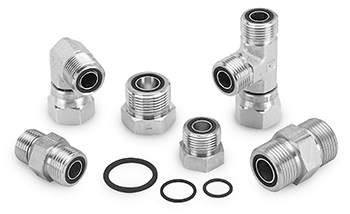
Seal-Lok for CNG:
Utilizing an elastomeric seal compound specially designed to address
the needs of the natural gas market, this ORFS fitting improves ozone
resistance and supports wider temperature range requirements (-40° to
300° F). Seal-Lok for CNG has been tested and certified by TUV according
to the ECE R110, ANSI NGV 3.1-2014/CSA 12.3-2014 standard for stainless
and zinc-nickel plated fittings, as well as ISO 15500. It also passed
Bonfire Testing in accordance with ANSI/CSA NGV 2. Seal-Lok for CNG is
improving connection reliability in CNG applications for on-vehicle fuel
systems and on infrastructure applications such as compressors, dryers,
fuel dispensers and storage tanks.
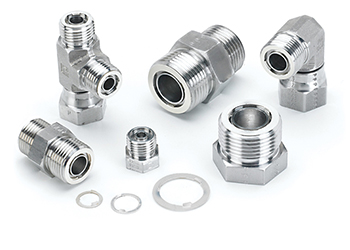 Seal-Lok Xtreme: This
ORFS fitting utilizes a patented metal seal that expands the fitting’s
temperature and chemical capability. It achieves superior tube and hose
connections at temperatures as low as -328°F and as high as 1200°F. It’s
also available with a patented metal port seal on fittings with the SAE
J1926 O-ring boss port end. Seal-Lok Xtreme has been extensively tested
in the areas of thermal cycle and shock, as well as shown success in
helium mass spectrometer and pressure testing. All of this makes it a
good fit for applications like combustion turbines, LNG storage and
fueling systems, high-temperature engine compartments, instrument
panels, and cryogenic equipment.
Seal-Lok Xtreme: This
ORFS fitting utilizes a patented metal seal that expands the fitting’s
temperature and chemical capability. It achieves superior tube and hose
connections at temperatures as low as -328°F and as high as 1200°F. It’s
also available with a patented metal port seal on fittings with the SAE
J1926 O-ring boss port end. Seal-Lok Xtreme has been extensively tested
in the areas of thermal cycle and shock, as well as shown success in
helium mass spectrometer and pressure testing. All of this makes it a
good fit for applications like combustion turbines, LNG storage and
fueling systems, high-temperature engine compartments, instrument
panels, and cryogenic equipment.
Innovation makes all the difference
Things have come a long way since the ’80s -- cell phones are now mini personal computers and media players that fit in your pocket, music is digital, leaving cassettes and CD’s a thing of the past, and word processor programs have vastly improved. Parker’s Seal-Lok ORFS fittings have also come a long way since the ’80s. Though the original ORFS design is still superior to many other connection types today, with the many exclusive enhancements made by Parker, only the Seal-Lok ORFS fitting has been able to take this reliable leak-free connection design to the next level much like some of the other technology improvements noted. At Parker, we’re always innovating and making sure that we provide our customers with the best possible solutions to optimize both their operations and bottom line.
Seal-Lok O-ring Face Seal Fittings are now available for purchase on Parkerstore。 Simply add products to your cart for shipment within two days for in-stock items.
The Article from Parker Hannifin ,本文来自派克汉尼汾流体传动有限公司。
版权声明:本文为原创文章,版权归donstudio所有,欢迎分享本文,转载请保留出处!


